


Robert V. Derrah was an American architect. His work included designs for the Crossroads of the World (1936), Coca-Cola Building (Los Angeles) and a 1942 extension on the Southern California Gas Company Complex.
He died at the age of 51 in 1946. [1]



Robert V. Derrah was an American architect. His work included designs for the Crossroads of the World (1936), Coca-Cola Building (Los Angeles) and a 1942 extension on the Southern California Gas Company Complex.
He died at the age of 51 in 1946. [1]
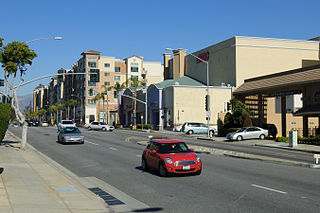
Monterey Park is a city located in the western San Gabriel Valley region of Los Angeles County, California in the Los Angeles metropolitan area, United States, approximately seven miles (11 km) from the Downtown Los Angeles civic center. The city's motto is "Pride in the past, Faith in the future". Monterey Park is part of a cluster of cities with a growing Asian American population. According to the 2010 Census, the city had a total population of 60,269. Monterey Park has consistently ranked as one of the country's best places to live due to its good schools, growing economy, and central location. Monterey Park is bordered by Alhambra, Los Angeles, Montebello, and Rosemead.
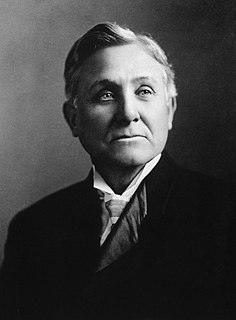
Asa Griggs Candler was an American business tycoon and politician who in 1888 purchased the Coca-Cola recipe for $238.98 from chemist John Stith Pemberton in Atlanta, Georgia. Candler founded The Coca-Cola Company in 1892 and developed it as a major company.

Streamline Moderne is an international style of Art Deco architecture and design that emerged in the 1930s. Inspired by aerodynamic design, it emphasized curving forms, long horizontal lines, and sometimes nautical elements. In industrial design, it was used in railroad locomotives, telephones, toasters, buses, appliances, and other devices to give the impression of sleekness and modernity.
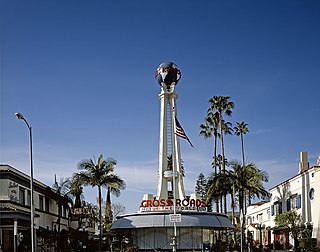
Crossroads of the World is an open-air mall on Sunset Boulevard and Las Palmas in Los Angeles. The mall features a central building designed to resemble an ocean liner surrounded by a small village of cottage-style bungalows. It was designed by Robert V. Derrah, built in 1936, and has been called America's first outdoor shopping mall.
The Crocker Motorcycle Company is an American manufacturer, based in Los Angeles, California, of single-cylinder speedway racing motorcycles from 1932, powerful V-twin road motorcycles from 1936, and the "Scootabout," one of the first modern styled motor scooters, in the late 1930s. Production ceased in 1942. In 1999 Crocker Motorcycle Company was resurrected to manufacture authentic OEM replacement parts and now produces complete Small and Big Tank Crockers in southern California, following the original specifications. Michael Schacht is Crocker Motorcycle company President.

El Sereno is a Los Angeles neighborhood in the Eastside Los Angeles region of Los Angeles County, California.
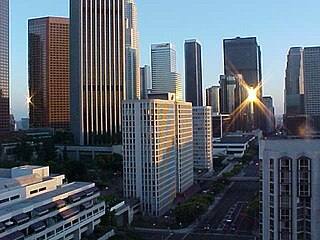
The Financial District is a district of Downtown Los Angeles along Olive, Grand, Hope, Flower and Figueroa streets from 4th Street to 8th Street. It is south of the Bunker Hill district, west of the Historic Core, north of South Park and east of the Harbor Freeway and Central City West. Like Bunker Hill, the Financial District is home to corporate office skyscrapers, hotels and related services as well as banks, law firms, and real estate companies. However, unlike Bunker Hill which was razed and now consists of buildings constructed since the 1960s, it contains large buildings from the early 20th century, particularly along Seventh Street, once the city's upscale shopping street; the area also attracts visitors as the 7th and Flower area is at the center of the regional Metro rail system and is replete with restaurants, bars, and shopping at two urban malls.

The Arts District is a neighborhood on the eastern edge of Downtown Los Angeles, California in the United States. The city community planning boundaries are Alameda Street on the west which blends into Little Tokyo, First Street on the north, the Los Angeles River to the east, and Violet Street on the south. Largely composed of industrial buildings dating from the early 20th century, the area has recently been revitalized, and its street scene slowly developed in the early the 21st century. New art galleries have increased recognition of the area amidst the entire downtown where other art museums are found.

Wilshire Center is a neighborhood in the Central region of Los Angeles, California.

Salinas station, also known as the Salinas Intermodal Transportation Center, is an intermodal transit center in downtown Salinas, California, United States. As a transit hub, the facility is a passenger rail station and bus station.

The Southern California Gas Company Complex is a group of buildings on Flower Street in Downtown Los Angeles. The main building, completed in 1925, was designed in the Renaissance Revival style by John and Donald Parkinson.

South Los Angeles, formerly South Central Los Angeles, is an area in southern Los Angeles County (California), lying mostly within the city limits of Los Angeles, south of downtown. It is "defined on Los Angeles city maps as a 16-square-mile rectangle with two prongs at the south end.” In 2003, the Los Angeles City Council renamed this area "South Los Angeles".

The Coca-Cola Building is a Coca-Cola bottling plant modeled as a Streamline Moderne building designed by architect Robert V. Derrah with the appearance of a ship with portholes, catwalk and a bridge from five existing industrial buildings in 1939. It is located at 1334 South Central Avenue in Los Angeles, California. It was designated Los Angeles Historic-Cultural Monument Number 138 on 5 Feb 1975. It is often referred to as the Coke Building.
Roland Coate was an American architect. He designed many houses and buildings in California, three of which are listed on the National Register of Historic Places.
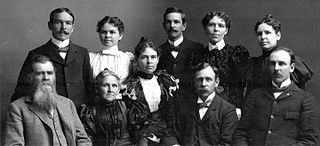
Joseph James Blick, sometimes credited as Joseph J. Blick, was an American architect who worked on commercial and residential projects and is best known for diverse residences in Southern California ranging from Mission to Modern styles. Born and raised in Clinton, Iowa, his father James Shannon Blick was a building contractor. The Blick family moved to Pasadena, California in 1887 soon after his sister Blanche married Frederick Russell Burnham, the celebrated scout and long time resident of California. Blick began working in Pasadena as a contractor with his father and in 1889 he apprenticed with T. William Parkes, a member of the Royal Institute of British Architects. In 1891, he married Daisy Russell, a first cousin of Frederick Russell Burnham. After completing his apprenticeship, Blick and Lester S. Moore founded their own architecture firm, Blick & Moore, in Los Angeles in 1895, where he continued to work until his retirement in 1937. Several of his commercial buildings and residences have been listed with the National Register of Historic Places.
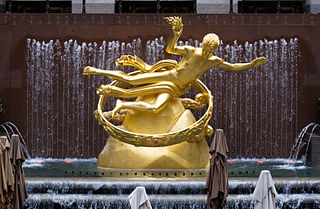
The Art Deco style, which originated in France just before World War I, had an important impact on architecture and design in the United States in the 1920s and 1930s. The most famous examples were the skyscrapers of New York, including the Empire State Building, Chrysler Building, and Rockefeller Center in New York City. It combined modern aesthetics, fine craftsmanship and expensive materials, and became the symbol of luxury and modernity. While rarely used in residences, it was frequently used for office buildings, government buildings, train stations, movie theaters, diners and department stores. It also was frequently used in furniture, and in the design of automobiles, ocean liners, and everyday objects such as toasters and radio sets. In the late 1930s, during the Great Depression, it featured prominently in the architecture of the immense public works projects sponsored by the Works Progress Administration and the Public Works Administration, such as the Golden Gate Bridge and Hoover Dam. The style competed throughout the period with the modernist architecture, and came to an abrupt end in 1939 with the beginning of World War II. The style was rediscovered in the 1960s, and many of the original buildings have been restored and are now historical landmarks.
Lily Lee Chen 李琬若 is an American politician and the first Chinese-American female mayor in the United States of America. Lily Lee Chen is a founding board member of Committee of 100.